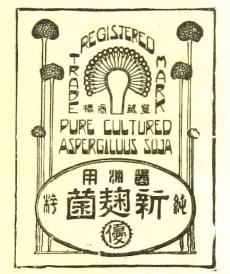This project explores how scientists and skilled workers sought to use microbes’ natural processes for making new products. Methods of microbial biosynthesis were ubiquitous in Japan, from miso-making in the kitchen, to soy-sauce mold starters and vitamins, and to monosodium glutamate and statins which scientists called “gifts from microorganisms.” In brewing houses as well as in the food, fine chemical, and pharmaceutical industries across the country, scientists and skilled workers came to study microbial life and to tinker with life as fermentation phenomena.
How did an approach to life as fermentation expand in scope beyond small-scale and traditional industries to a multitude of scientific and industrial fields, from the turn of the twentieth century to the 1960s? I examine the significance of material and intellectual continuities with premodern Japan. Moreover, I reconstruct how fermentation scientists managed the problem of scale, as they aimed to enhance or repress specific micro-processes in cells for the purpose of recalibrating wider agricultural, industrial, and nutritional ecologies in society. How did they draw out the possibilities of what microbes as living things could do? I trace how such broader debates on environmental management impacted material culture at the level of food, resources, and medicine in Japan.

